Last updated on September 17th, 2025 at 12:05 pm
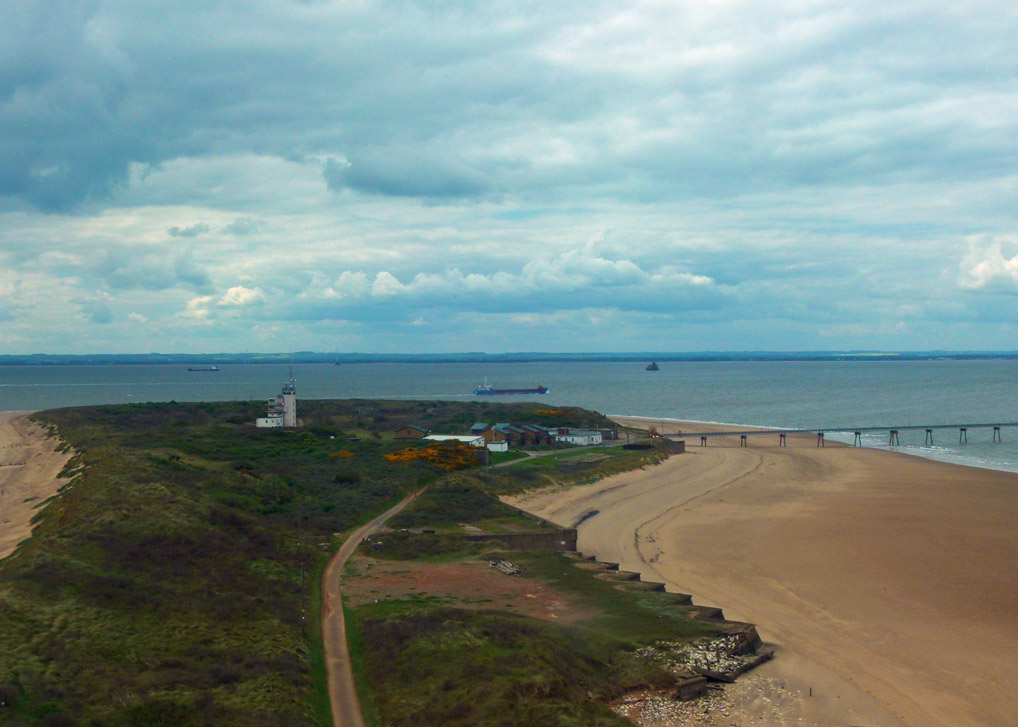
Here is a dramatic tale – of shifting landscapes, lost settlements, abandoned military installations and wobbly legs. It features the spindly, exposed, crooked finger of Spurn Head on the East Yorkshire coast. Spurn is an enigmatic, fascinating and slightly scary place, a low-lying spit of glacial clay, sand and shingle, washed on one side by the unforgiving waters of the North Sea and on the other by the busy Humber Estuary. The peninsula is just over three miles long, but as little as 160 feet/50 metres wide and rarely higher than 20 feet/6 metres. Currently, one section, more than half a mile of it, floods at high tide, creating a tidal island beyond. It is an ever-changing environment. Some believe that Spurn Head goes through a recurring life cycle spanning some 250 years, during which it is wiped out at one location, reborn some distance further west, settles down for awhile, and is then obliterated again. It is the southernmost point of the Holderness Coast, whose northern end is marked by the high chalk cliffs of Flamborough Head, some 40 miles (64 km) away. This entire coast has been steadily eroding for centuries. Experts calculate that a strip of land some 3 miles wide has been washed into the sea here since Roman times, about 2 miles of which have been lost since 1066. The current rate of coastal attrition is astonishing – some 6 feet, or 2 metres, or more, each year. Some of this eroded material is deposited on the ever-shifting Spurn Head – a classic example of what geographers refer to as longshore drift.
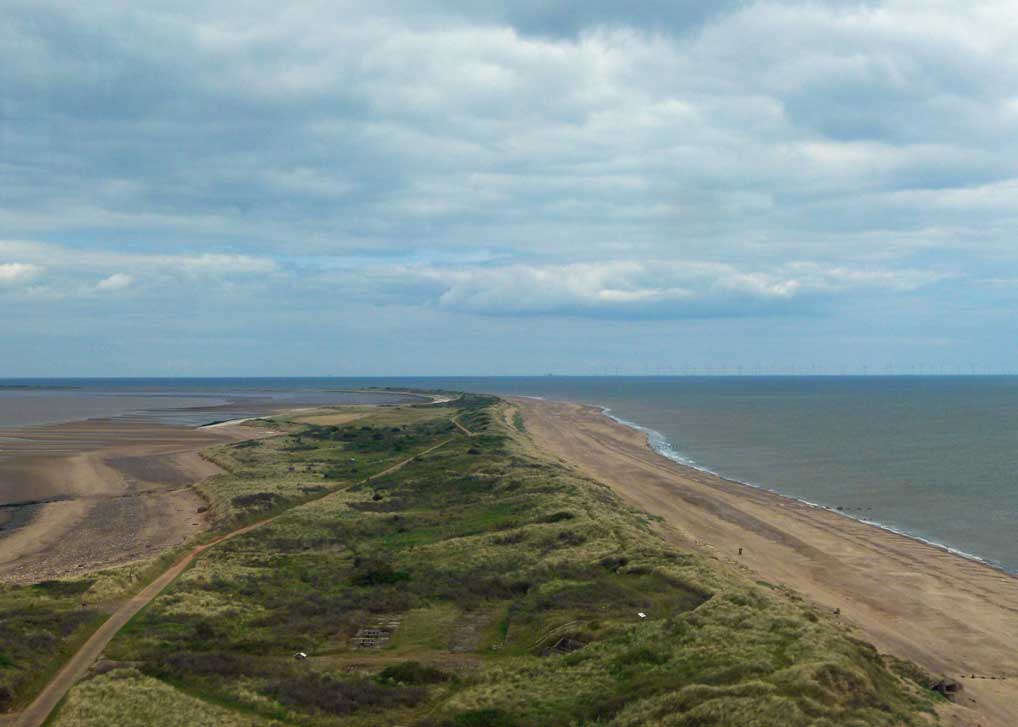
During the course of all this, countless settlements have been claimed by the cold, grey, waters of the North Sea. At least 29 villages along the Holderness Coast have been lost, depending which source you read. Sadly, more will probably follow. However, one name familiar to students of history and literature is Ravenser, or Ravenspurn. The name is derived from the Danish hrafn’s eyr, which means something like raven’s sandbank, or tongue. The name most likely refers to Spurn Head itself, though two long-vanished ports called Ravenser and Ravenser Odd can make for confusion – and contradiction. Any celebrity is largely due to two medieval Kings of England who, tradition has it, landed here, or hereabouts. Henry Bolingbroke, the future King Henry IV, is said to have landed at Ravenspurn in 1399, en route to depose his cousin, Richard II. Later, in 1471, Edward IV, returning from exile in the Netherlands, went on to seize back the throne from Henry VI and the Lancastrians. Almost inevitably, Ravenspurn, or Ravenspurgh, makes an appearance in Shakespeare’s plays Richard II and Henry IV (Parts 1 and 3). A 15th century medieval cross, believed to have been erected at Ravenspurn, or the port of Ravenser, to commemorate Bolingbroke’s landing, now resides in the garden of a home for the elderly in the town of Hedon, just outside Hull. In case any of the residents are puzzled by its presence, it had to be relocated to save it from the advancing sea.

The extinct Ravenser was a pre-conquest port or anchorage, possibly known to the Anglo-Saxons as Cornu Vallis (the horn of the valley) and also possibly the place from which Harold Hardrada’s defeated and depleted forces departed after the Battle of Stamford Bridge in 1066. I have no idea what became of it, but it’s certainly long gone. Neighbouring Ravenser Odd was a reasonably well documented port town of some significance, founded in the 12th century on an island that had appeared in the water off Spurn Point. Henry III granted it a weekly market and a 16-day fair in 1251. In 1299, this was extended to a twice-weekly market, on Tuesdays and Sundays, and a fair lasting 30 days. The good people of Grimsby, on the opposite side of the Humber, complained that the dastardly boatmen of Ravenserodd were intercepting merchant ships destined for Grimsby and persuading them to land at Ravenser. However, the sea was claiming Ravenserodd’s buildings as early as the 1340s. In the 1350s, the foundations of the chapel were destroyed, exposing corpses and the bones of the dead. The sad remains were gathered up and reburied at nearby Easington. According to Richard Muir in his absorbing book, ‘The Lost Villages of Britain’, “By the end of the fourteenth century, only a manor house remained at Ravenser and Ravenserodd had virtually disappeared.”

The lost towns and villages of the East Yorkshire coastline, based on the map in T. Sheppard, The Lost Towns of the Yorkshire Coast (London, 1912), with some modifications. The coastline at the end of the Roman period is shown in orange-brown and is set against the modern landscape (green), showing the extent of the erosion on the east coast. Also depicted are the lost settlements of this coast and some of the major population centres today. Note: the ‘new lands’ on the north side of the Humber were created via reclamation from the seventeenth to twentieth centuries (image: C. R. Green).
I am grateful to Dr Caitlin Green for allowing me to reproduce her map showing the lost settlements of Holderness. Read her fascinating article about Ravenserodd and the erosion of the East Yorkshire coast.
There is something poignant about vanished places. The seas around Britain conceal many, probably all sharing the same improbable legend that the drowned church bells can be heard ringing out on stormy nights. I grew up believing such a yarn.
No one lives on Spurn Head today – with the exception of the crew of the Humber Lifeboat Station, almost at the very end of the spit. The station was established in 1810 and is the only Royal National Lifeboat Institution lifeboat station with a full-time team. It is a busy post. During the course of its existence, the Humber Lifeboat Station has rescued more than a thousand people. Don’t you find it bizarre that something as vital as the RNLI receives no government funding and is reliant on charitable donations? Some might think we occasionally get our priorities mixed up in this country.
Spurn Head was an active spot in wartime. Against the background of Hull being Somewhat Important, and the fact that the German Navy took it upon itself to shell the coastal towns of Scarborough, Hartlepool and Whitby, someone decided that Something Should Be Done. Accordingly, the powers that be created the Humber Area Defence Scheme. Spurn was fortified, a coastal battery was constructed at Kilnsea just up the coast (the Godwin Battery) and forts were built in the Humber Estuary itself – Bull Sand Fort a mile and a half off Spurn Point and Haile Sand Fort on the opposite side of the Estuary, near Cleethorpes. Everything was controlled by the Port War Signal Station (PWSS) on Spurn Head, which had more than 80 personnel. A road and a railway were built along the length of the spit, to help with construction and to service the installations once they were operational. The Humber Forts, in fact, were not completed until after the First World War was over. However, everything was put to good use during the Second World War. A steel mesh anti-submarine net was even stretched between the forts, across the mouth of the estuary. The War Office did not finally abandon Spurn Head until 1956. The remains of military occupation are still there, most half-buried under shifting sands and grass. Kilnsea Fort has all but disappeared into the sea, but Bull Sand and Haile Sand Forts are still there – in private hands, apparently. (“For sale, pre-loved early 20th century concrete armoured fort/gun battery. Largely un-used but in need of some refurbishment. Excellent location for defending the Humber Estuary.”)
In 1959, Yorkshire Wildlife Trust acquired Spurn Head and it is now a designated national nature reserve. Its variety of habitats, including saltmarsh, beach, dune, lagoon, coarse grassland and scrub, make it a magnet for birds. In spring and autumn, twitchers with binoculars and obscenely large camera lenses gather to spot rare migrating breeds. Botanists get terribly excited about the plant life. Even lesser mortals may glimpse roe deer, grey seals, porpoises and immigrant Hebridean sheep. I did see a slightly mangy fox, which I subsequently discovered has been named ‘Basil’ by the RNLI crew. There may be more than one fox, of course – so it may not have been Basil, but one of his friends, Michael J, or Samantha, that I saw. Last, but not least, fossils can be found on the beach, washed down the coast from the north, or walking toward the end of the Point.
A visit to Spurn Head

After that extensive preamble, you will appreciate that the prospect of a visit to Spurn Head can generate a frisson of apprehensive excitement. As we said at the start, Spurn is an enigmatic, fascinating and slightly scary place. It is not like a walk around the local park. In 2013, a tidal surge washed away part of the spit, including part of the old military road. This is the section, more than half a mile of it, which is inundated at high tide, cutting off the end of the peninsula. It is euphemistically referred to as a ‘washover’ and not always terribly deep, but the reality is that strong tides and soft sand make it extremely dangerous. Thus, Spurn Point is currently only publicly accessible at low tide and on foot (or by bicycle, if you’re that way inclined). It is a round trip of about 8 miles. That may not sound a lot – and, of course, there are no hills – but I can tell you from personal experience that the terrain of shifting sand and stone underfoot can sap aging leg muscles. There is an alternative – Yorkshire Wildlife Trust’s popular ‘Spurn Safari’ ex-Dutch army Unimog 4×4 – but even that will not attempt the journey if the water level is too high.
So check the tides before setting off. Plan to make sure you have time to get there – and back.

You get a sense for how remote Spurn Head is when travelling to it across the almost featureless landscape of East Yorkshire. I went with friends in a car. It is not that far from anywhere; it just feels like it, like a journey to the very end – which, in some ways of course, it is. There was something of a Quest about it, perhaps even a visit to the Celtic Isle of the Dead. The drive seemed to take forever, through flat farmland and attractive villages, past isolated houses and farms but, suddenly, we were there, pulling into a modestly sized car park. Suitably clad – and, sadly, the little black number and stilettos had to be left at home on this occasion – the first thing we encountered was the excellent YWT visitor centre – aka the Spurn Discovery Centre. It is strongly suggested that one avails oneself of its facilities before heading any farther. There are absolutely no facilities – by which I specifically mean public toilets – on Spurn Head; so plan and equip yourself accordingly. If it’s any help, we took around four hours to walk there and back, which included time exploring, reading information boards and climbing up the late Victorian Spurn lighthouse.

Spurn Head only really reveals itself beyond the Discovery Centre. The landscape opens up on both sides. Big skies. Grass and large, purple, iris-like flowers waved in the breeze. Beyond, an untidy rock-strewn beach. On the far eastern horizon, to our left, a massive offshore wind farm – a forest of rotating turbine blades. As we got further down the spit, it seemed as though there was a line of large ships outside the entrance to the Humber. Do ships have to queue to enter the Estuary, I wondered, rather like aircraft stacking up to land at Heathrow? The west, estuary side, of the spit is more mudflat – and full of feeding birds. There were also hundreds of hairy brown-orange caterpillars, particularly toward the end of the point. They were everywhere. These were brown-tail moth caterpillars, whose hairs can cause skin irritations and problems for asthmatics. Notices strongly advise people not to touch them. In Britain, you rarely see signs warning of dangerous wildlife, not even the aggressive cows that freely roam fields near us, so these caterpillars must be really something.


Along the route was a series of attractive, wooden, poles. Nobody could work out what these were for. Could they be some indication of water depth? I later discovered they are part of something called the ‘Active Beacon Photo Post Project’, run by East Riding of Yorkshire Council, to encourage visitors to take photographs from 26 posts dotted along the East Yorkshire coastline. What a lovely idea; if only I had known, I would have taken some photographs.


Because the day was rather balmy, walking across the area of ‘washover’ did not feel particularly threatening. I am sure, when the weather is less clement, it is another story. Even so, the destruction of the road by the sea is a stark reminder of the power of nature. Railway tracks set into the road now head off in the direction of the sea. Beyond the washover, the ground rises (this is a relative term) and the land widens. Shortly after, we came upon the concrete remains of the PWSS and, beyond that, the late Victorian lighthouse – which it is possible to visit. You can’t miss it; there’s only one way to go.
There have been lighthouses of some sort at Spurn for centuries, certainly since 1427. The remains of just two survive, and they are both relatively new. The ruined older of the two, built in 1852, has an uncertain future on the sandy shoreline, surrounded by the sea at high tide. The newer Spurn lighthouse is a traditional round black and white hooped affair, brick-built on the headland in 1895, 128 feet (39 m) high. Its main beam had a range of 20 miles and it did its job for shipping for almost a century, until 1985. For safety reasons, only a limited number of people can visit the lighthouse at any one time and it is not always manned. However, as you would expect, there are spectacular views from the top. It was particularly impressive looking back and seeing how narrow the washover section was – and what a long way back it seemed. The video at the end will give you a flavour of what it’s like.

Beyond the lighthouse are the RNLI station and housing for personnel. The housing looks incongruously out of place, almost as though someone has transplanted part of a pleasant modern estate cul-de-sac into a long-ago abandoned barracks. The old coastguard station adds a touch of Soviet-like era architectural glamour. All about and onto the shoreline are the decaying remains of military installations – bunkers, ammunition stores, gun and searchlight emplacements. Even a parade ground, under a field. Actually, a pillbox greets you just outside the Discovery Centre and there is a line of tank traps along the peninsula. On the beach at the point, some of the installations put me in mind of a less daunting version of Hitler’s Atlantic Wall. Spurn was never attacked, by the way – and I’m not even sure whether any of the guns were even fired in anger. Not even during air raids on Hull, I wondered? Maybe they didn’t want to give away their position; that’s the thing about guns.


That said, there was certainly a lot going on at Spurn Head during the last world war. It must have been a busy place, though I am guessing it could be an awfully lonely posting, too. Even worse now, I thought, and yes, I can imagine it could be quite scary too, notwithstanding the comfort of the nearby RNLI station. The return walk was uneventful and, not stopping as often to look at things, quicker. However, we mentioned wobbly legs at the outset and I confess that I found the going hard over the washover section. It was simply draining and I was very glad to reach the Discovery Centre. However, whether you are tired or not, I can highly recommend the coffee, cakes and friendly, humorous, staff at the Discovery Centre – 5 stars, ladies – thank you!
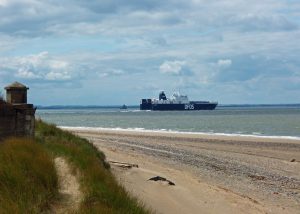
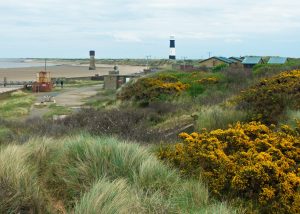



Would I also recommend a visit to Spurn Head? Yes. Many do. I would happily go again, and explore more. It is fascinating. No one could surely describe the place as attractive, but there is definitely a bleak beauty to it – and certainly an air of mystery. Was it my imagination, or could I hear the sound of muffled church bells wafting ashore on the sea breeze?
Watch the short video below and check out a bit more from the Yorkshire Wildlife Trust’s website.
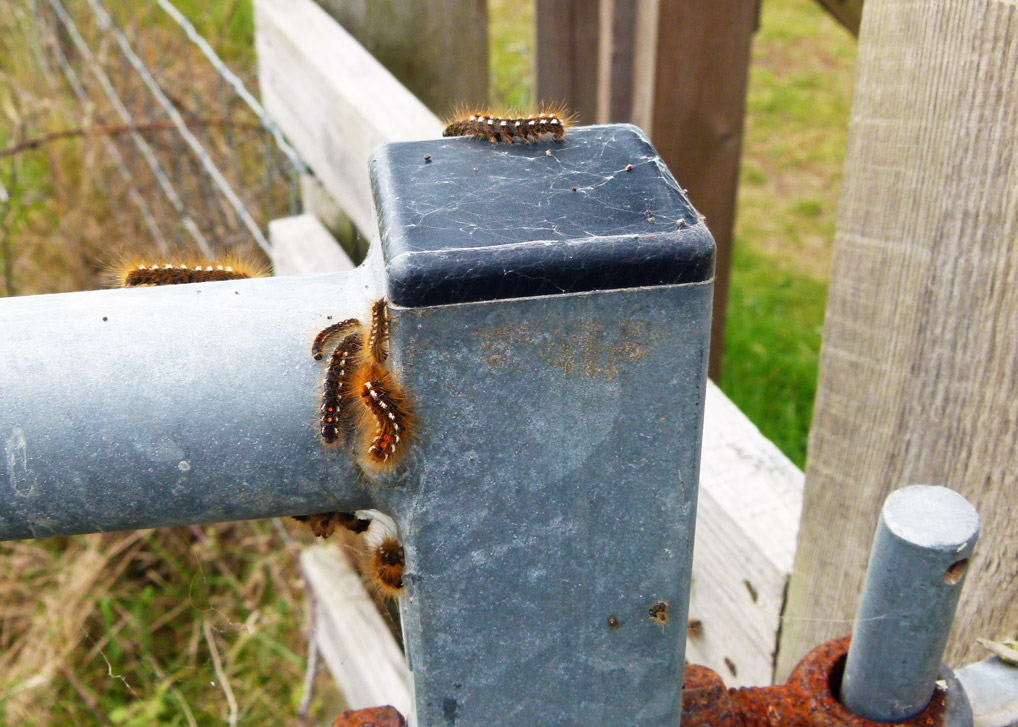


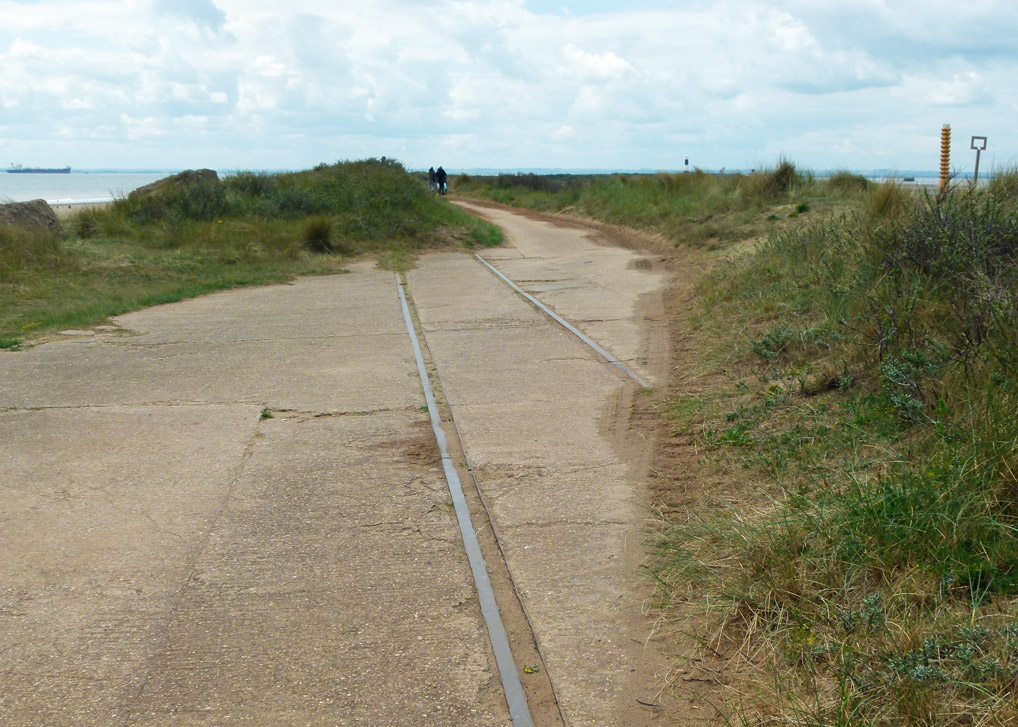


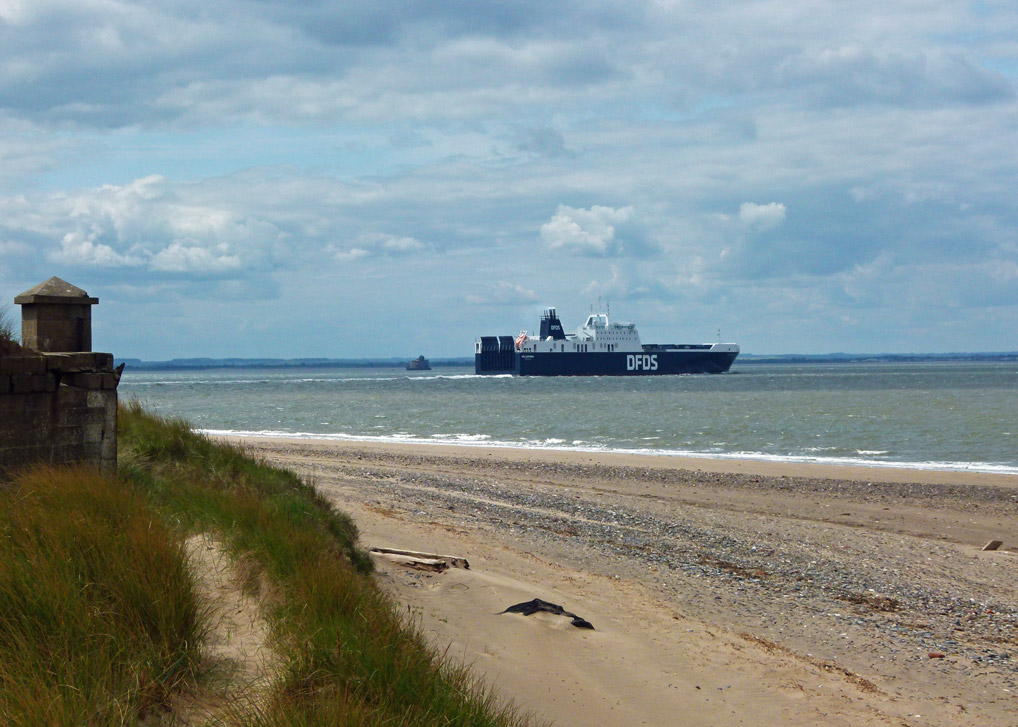
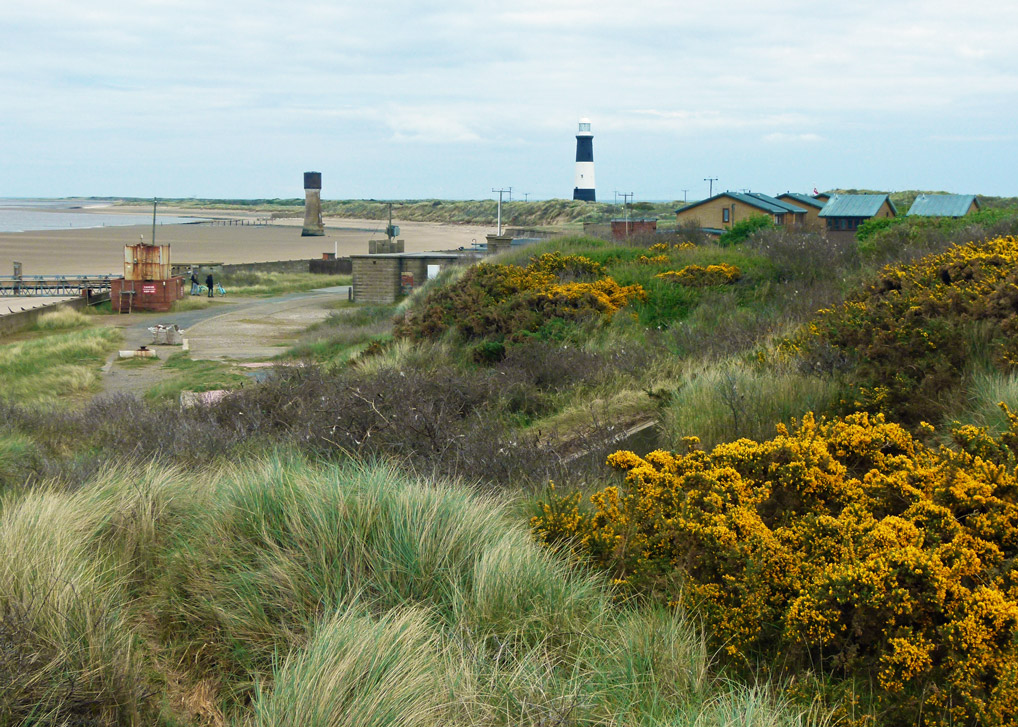


I love the site to bits, and I am so glad that I stumbled upon it. Mike is a very urbane writer, and his emails are always most enjoyable as well as a bit offbeat. Keep up the good work, Mike!
Thanks for your really very generous message!!
very intersting post. hope you are well and not snowed in;)
Thanks, Tanja. I think we did have snow at the time, but not snowed in 🙂
Even witthout the stilettos I’d never make the walk these days, which is a shame as you have caught so much of its history and atmosphere.
Didn’t Ginger Rogers say she did everything that Fred did – except she did it in heels?!
A very interesting and enjoyable post, thank you.
All the best Jan
Thanks, Jan, glad you enjoyed it.
Wonderful article thanks Mike. It especially caught my eye because of my interest in the Spurn Lightship. There is a small town (Tokoiti) in Otago, New Zealand where the streets are all named after English lightships and I lived for a while on the corner of Spurn Street. Your article is another enticement and guide when I hope to visit Spurn.
That’s great, Colin; hope you get to visit soon.
Hi Mike – this was a quite amazing post on the Spit … it’s always entranced me – though I’ve never been … I’ve got as far as the Humber bridge and half way across from the north side. Great information you’ve given us … I hope you don’t mind … but I wrote about the Hedon Mace – that was brought to the Guildhall in London in 2015 for a brilliant tiny exhibition – when the Hedon Mace was reunited with the Crystal Sceptre from Henry V’s time (1421) … stunning workmanship – see-through crystal mace made six hundred years ago … more details on my blog (Hedon Mace), which includes a link to the Hedon blog re the Hedon Mace. But I’d love to take the trip you made … and understand the note – re don’t bring my little black dress or wear stilettos. Excellent piece – thank you … cheers Hilary
Glad you liked it, Hilary. Of course, I will keep an open mind on the black dress and stilettos…
I love love love that lighthouse picture! You managed to get the lighthouse and so much of the landscape as well. What an interesting area to visit!
Why – thank you, young lady.
A fascinating history!
Thank you kindly!
A very interesting and enjoyable post! Thank you very much.
Thank you, Lynette, much appreciated!
Another fascinating and informative post, beautifully written – as always! I have never heard of Spurn although I did study Richard 11 and vaguely remember the mention of Ravenspurgh. I think I would enjoy a visit to Spurn Head. I’m rather a fan of bleak atmospheric places. I was delighted (perhaps a little disappointed), to read that you left the little black number and stilettos at home…
I think delighted was probably right, June 🙂 Spurn is certainly interesting, and I’d like to revisit. I think it’s the kind of place that’s never the same.
Riveting piece, Mike, thoroughly enjoyable read about a place I’ve never been. There’s definitely something fascinating about disappearing places, whether eaten by advancing seas or submerged under man made reservoir. And you’re so right about the RNLI, we made a similar observation in a post from Cornwall last year. We have some unfathomable priorities as a nation.
Oh, we do get a lot wrong, do we not?! The RNLI situation is a mystery. Mind you, we get quite a lot right too – I don’t suppose anywhere is perfect?!
Indeed not
I enjoyed this post, Mike. Thank you for including a map!
Thanks, Jennie – I needed the map to remember what was what!
A map is my best friend!
A really fascinating post focussing on the impact of nature, including caterpillars, on our history
Thank you, Derrick!
Bleak beauty and an air of mystery – very much my cup of tea! From your description, I suppose it is nearly impossible to get there by public transport, and so I’m afraid I’ll have to make do with your post for a visit.
There is probably public transport – worth checking. Or you could hire a car next time you’re over. Either way, do check the tides first!
i love historical settings and even mysteries, but I don’t do bleak very comfortably. The lighthouses at Spurn would be well worth examining, even if they are not ancient How sad is it that the older one has an uncertain future BECAUSE it is on the sandy shoreline, surrounded by tides. And the war facilities would be amazing to look at.
A line of large ships outside the entrance to the Humber was weird but hopefully the Discovery Centre asks all the right questions.
It’s certainly an interesting place, Hels. And the Discovery Centre is excellent.
Fascinating place for sure. Great article, and full of surprises like all those disappeared villages.
Thanks, Mike! It’s certainly an intriguing place – I’d happily revisit.
Thank you Mike for this fascinating account. My bones are now aching and I hardly moved a muscle. Not a trip I shall be undertaking I’m afraid!
Mine have been aching ever since, Peter. The return trip was worse, of course, because north is always uphill… 🙂
Ah, Mike, you’ve finally discovered my very favourite place in the whole of Yorkshire! As a birdwatcher, I love our visits, but we keep it to a couple of times a year because, as you point out, getting there seems to take forever. It’s lovely to visit on a summery day, as you did, but it’s equally good in less clement weather, when the stiff winds make it very invigorating. Thank you for a very entertaining post
Adrian
Well, hi Adrian! Thanks for the comment. I’d like to experience Spurn in less clement weather, provided I was dressed for it – and preferably in the company of others to prevent me wandering off… 🙂
Thank you so much for your interesting posts. We thoroughly enjoy them.
That is wonderful, Joyce – thank you so much for saying so.
A most interesting post about what seems to be a fascinating place. I must put it on my ‘to visit’ list. Thanks for bringing it to our attention.
Thank you; we aim to please… 🙂
Lost villages of East Yorkshire. Terrible. I had a few castles some years back that suffered a similar fate. Four hours without a pitstop! I shudder to think!!
Fortunately, there are some lonely spots with (relatively) tall grass. Of course, gulls are always a worry.
That was quite a hike, Mike! Thank you for another great armchair visit to your country. So much history is layered into the land — and sometimes washed into the sea…
Glad you enjoyed it, Will. Not too breathless, I hope? 🙂
A very interesting post which I enjoyed reading. It sounds like a fascinating and rather quirky place to visit and I like your humour about the fox(es) 🙂
Thanks, Eunice. Not everyone appreciates my ocassionally quirky remarks! 🙂
Fascinating, I wonder how many visitors the lifeboat has to rescue. Longshore drift was one of the few things my children remembered from geography lessons. Sad to lose villages, but good for the wild life .
I don’t know, but bet more than a few have tried to cross the flooded bit!
You always have such a wonderful storytelling ability. Great post! 🙂
That’s very kind – thank you. Made my day! 🙂
Such a fascinating place, Mike, I would love to walk this spit. ❤️
Thanks, John. I think you’d take some interesting photo, too.
Thanks, Mike.
Excellent, interesting and very readable item. Thoroughly enjoyable, and thank you for your efforts. Loved the bit about the fossils!
Thank you, kind sir! I’m always pleased when someone spots my daft comments 🙂
This would be a fascinating place to visit. A very interesting post. Mike. Thanks.
Thanks, Darlene. I’m a bit behind – as usual!!